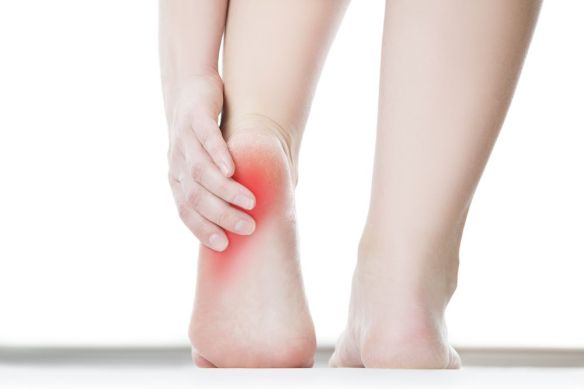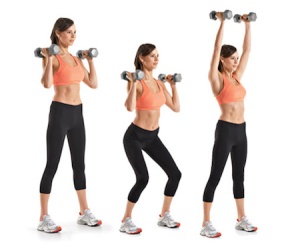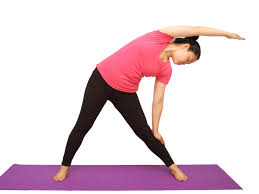Seventy-two per cent of migraine sufferers in a clinical trial experienced either ‘substantial’ or ‘noticeable’ improvement after a period of chiropractic treatment, defying historical skepticism of chiropractics by some medical practitioners.
The randomised clinical trial was undertaken by Dr Peter Tuchin, a chiropractor for the past 20 years, as part of his recently-completed PhD thesis at Macquarie University.
“Around 22 per cent [of patients] had substantial reduction – which means that more than 60 percent of their symptoms reduced during the course of the treatment,” Tuchin says. “What makes this a really strong result is that this was a really chronic group – the average length of time they’d had migraines was 18 years. To get a change of that sort of magnitude in a really chronic group was quite amazing.
“Another 50 per cent had quite noticeable improvement. They either found that the frequency of the migraines was less, the length of time they had them was less or that they didn’t need to use their medications as much. This last result is very significant because some of the migraine medications are very strong drugs which have lots of side effects. Some of the migraine medications also have the problem of giving instant relief to the migraine, but creating another ‘rebound migraine’ the next day.”
The trial used 123 migraine sufferers, whittled down from around 1000 who applied after seeing a television program about the research. This group was divided into a treatment group who received chiropractic care, and a control group who were told they were receiving a form of electrical physical therapy.
“Both groups kept a record of their migraines for the whole six months, noting down how often they got them, how severe they were, how long they lasted, and if there was anything they could think of that contributed to them,” Tuchin explains. “For two months prior to any treatment they just diarised their migraines, followed by two months of treatment and then two months of post-treatment.”
Despite this study, some medical practitioners still dispute the ability of chiropractic care to help migraine sufferers. However, Tuchin believes this is a fast-diminishing group.
“I think the vast majority of medical practitioners are now open to chiropractic, but there’s a very small percentage who don’t realise what developments we’ve had, what inroads we’ve made,” Tuchin says.
“Chiropractic is not the be all and end all, but for a good percentage of migraine sufferers the neck is a significant contributing factor, and for them chiropractic treatment is really effective. I’m not saying that everybody’s going to be cured, but there’s very little to lose.”
May 23-29 is National Chiropractic Care Week. This year the theme is safe drugfree treatment of headaches. It is estimated that 10 to 12 percent of the Australian population suffer from migraines which costs the country $1.5 billion each year.
Chiropractic and Migraine
Although migraine attacks affect a significant number of people the triggering processes for the headaches are not fully understood.
Changes in the function of the blood or nervous systems in specific areas of the brain and changes in chemical balances within the body have been related to the cause of migraine attacks.
So, it is interesting that chiropractic treatment has beenshown to be effective for migraine sufferers.
Migraines are normally divided up into two different typesalthough many more subdivisions exist. These two main categories are ‘common’ and ‘classic’ migraine.
The pain of the headache is normally one sided covering half of the forehead and one eye however pain can also spread from the back of the head over to the eye or in some cases be located over both eyes.
Sensations described include, throbbing, pulsing and stabbing pains.
This is the most common type of migraine accounting for 80-85% of attacks. Research indicates that a change in cerebral blood flow could be responsible for the symptoms of this headache.
Common Migraine
It normally involves:
- a unilateral pulsing headache
- more commonly in females
- is usually found to have started in young adulthood
- headaches are usually severe although sufferers are able to carry on with their daily activities
- there is often associated nausea and vomiting.
Classic Migraine
This type of migraine accounts for about 10-15% of attacks with the typical throbbing unilateral headache as in a common migraine, but is preceded by what is known as ‘aura’ or ‘prodrome’. This describes symptoms experienced prior to the onset of the throbbing headache such as:
- visual symptoms such as flashing lights (scintillation)
- the presence of a blind spot (scotoma).
This usually lasts up to 30 minutes after which it is replaced by a disabling headache that can last for a few hours to 3 days.
- Nausea and vomiting may occur.
- Photophobia (sensitivity to bright lights) is common and bright lights can also provoke the pain.
- Rest in a cool dark and quiet room is often reported to be the only relieving factor.
Again, the cause of these headaches are not fully understood but are thought to be related to the changes in blood flow, the presence of certain chemicals and the way in which nerves send signals.
If you want to read more about other types of migraine go to Chiropractic and migraine variants.
Triggers
Many triggers have been related to the onset of a migraine attack some of the more common are listed below:
- after periods of stress (commonly occurs on over the week end or holidays)
- Foods (commonly; chocolate, caffeine, nitrates, cheese, nuts, wine and many more)
- Some medications (including vasodilators)
- Changes in sleeping habits
- Hormonal changes (associations with the menstrual cycle)
- Tension in the neck (especially the upper part of the neck)
But it is important to know that in reality, for many people, the symptoms are a mixture of more than one type of headache. Many specialists, including chiropractors, now talk about a headache continuum, where the, severely disabling, classical migraine is at one end ranging to the, less disabling, mild tension headache at the other end.
Treating Migraine
Identification of a specific trigger is essential in the management of the problem in a regular sufferer, with behavioural or lifestyle changes playing an important part in the treatment (e.g. avoidance of certain foods or maintenance of a regular sleep pattern).
Nutritional and herbal support have indicated that the use of supplements such as omega-3 fatty acids, magnesium, calcium, vitamin D among others useful in the treatment of migraine. However always consult your chiropractor or doctor before beginning any supplements.
Medications can be of use in some cases but are mainly prophylactic. Initially over the counter medications can be used but if persistent your GP may advise the use of prescription drugs.
Acupuncture treatment has also been shown to help in some cases among other alternative techniques.
Chiropractic has been shown to help reduce the severity and frequency of migraine attacks in many cases, especially cases of common migraines, and we therefore recommend that you undergo a trial treatment.
Chiropractic treatment also deal with many contributory factors or after effects including relieve of restriction in movement of the neck, muscle tension in the neck, upper back and shoulders and helping correct any postural issues that may influence the occurrence of both migraine and tension headaches.




 Plantar fasciitis causes pain in the bottom of the heel. The plantar fascia is a thin, ligament that connects your heel to the front of your foot.
Plantar fasciitis causes pain in the bottom of the heel. The plantar fascia is a thin, ligament that connects your heel to the front of your foot. g.
g. This pose is a low back saver and is the hunch reducer. Do it for your posture, do it for your pain, and do it because it feels so good.
This pose is a low back saver and is the hunch reducer. Do it for your posture, do it for your pain, and do it because it feels so good.


 Lean Red Meat
Lean Red Meat
 Chocolate
Chocolate Shellfish
Shellfish Avocado
Avocado Fatty Fish
Fatty Fish





 Mixed Vegetables
Mixed Vegetables





 —it’s your reaction to it that matters!
—it’s your reaction to it that matters! sad or depressed. Frustration, or a sense of powerlessness at work, is a common form of emotional stress.
sad or depressed. Frustration, or a sense of powerlessness at work, is a common form of emotional stress. chemical. Because not everyone reacts. Symptoms can appear when you lose your ability to adapt. Chiropractic care has helped millions reduce or eliminate reactions to many types of chemical stress
chemical. Because not everyone reacts. Symptoms can appear when you lose your ability to adapt. Chiropractic care has helped millions reduce or eliminate reactions to many types of chemical stress s (maximum bone density and strength) than those who do not. For most people, bone mass peaks during the third decade of life. After that time, we can begin to lose bone. Women and men older than age 20 can help prevent bone loss with regular exercise. Exercising allows us to maintain muscle strength, coordination, and balance, which in turn helps to prevent falls and related fractures. This is especially important for older adults and people who have been diagnosed with osteoporosis.
s (maximum bone density and strength) than those who do not. For most people, bone mass peaks during the third decade of life. After that time, we can begin to lose bone. Women and men older than age 20 can help prevent bone loss with regular exercise. Exercising allows us to maintain muscle strength, coordination, and balance, which in turn helps to prevent falls and related fractures. This is especially important for older adults and people who have been diagnosed with osteoporosis. earing include swimming and bicycling. Although these activities help build and maintain strong muscles and have excellent cardiovascular benefits, they are not the best way to exercise your bones.
earing include swimming and bicycling. Although these activities help build and maintain strong muscles and have excellent cardiovascular benefits, they are not the best way to exercise your bones. dy. When starting an exercise routine, you may have some muscle soreness and discomfort at the beginning, but this should not be painful or last more than 48 hours. If it does, you may be working too hard and need to ease up. Stop exercising if you have any chest pain or discomfort, and see your doctor before your next exercise session.
dy. When starting an exercise routine, you may have some muscle soreness and discomfort at the beginning, but this should not be painful or last more than 48 hours. If it does, you may be working too hard and need to ease up. Stop exercising if you have any chest pain or discomfort, and see your doctor before your next exercise session.